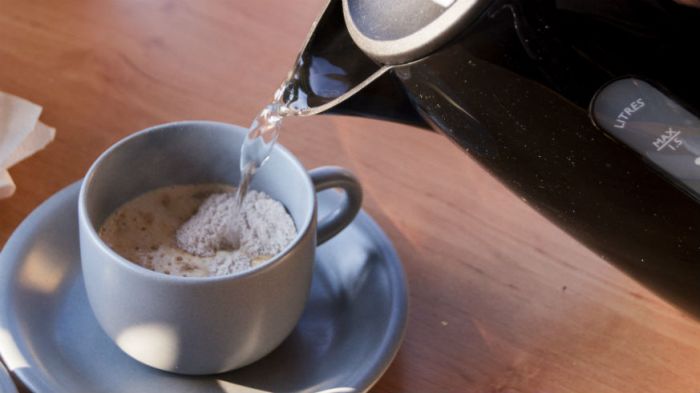Let’s just say my life suddenly became difficult.
I’m one of those cliches — the ones who look ever so slightly down at the self-help genre. It’s a silly (and, in some cases, potentially dangerous) hang-up. It’s also meant I’ve long thought of myself as too cool for “mindfulness.” Even when I downloaded Headspace — one of the world’s top meditation apps, used by 16 million subscribers (including Emma Watson, who’s definitely cooler than me) — it sat on my phone’s desktop for months, unused, unloved, as ignored as Tinder became once I realized my life was probably too crazy for dating.
A few months ago, I finally had to use it or else. Worrying had officially become a problem. I would wake up at night, thinking thinking thinking, unable to return to sleep. I spent the days bleary-eyed and frazzled and stressed, feeling like my body was seconds from giving up on me. I was mired in self-doubt, truly pessimistic about the future — not just humanity’s future, but my own. These are the symptoms Trump supporters laugh at; poor me, just another libtard snowflake. But the Orange Menace wasn’t the only worry in my life.
I have a fun history with anxiety. In 2010, just a hair into my 30s, my body up and decided to rebel against me. I was fairly healthy if not too healthy, and my life was in a bit of a rut. Nothing earth-shattering. And yet, all of a sudden, at random times — usually neutral or even nice ones — I’d have trouble breathing. My body would tense up and I’d feel an uncontrollable need to move around. It felt to me, who’s never had a heart attack, like I was having a heart attack. Doctors were baffled, but only because it turned out my real ailment was far more common: I was merely having panic attacks.
They gave me a bottle of Xanax. For a month, I would pop them when my body abruptly went after me, which turned out to be a lot. Then a friend convinced me to do my best not to get hooked. The withdraw from Xanax, he told me, was far worse than anything that got you on it. I switched to therapy, and I was confronted, every session, with more anxiety: I was convinced I was far too boring to fill out an entire hour with my problems. By the time I dumped my therapist, the attacks had disappeared, as suddenly and mysteriously as they had begun.
Jump to October 2016: They’re baaaaaack. Even though panic attacks tend not to be triggered by specific feelings — they just come and go at random, rooted in something deeper — it was obvious why mine had scored a sequel: A large part of me knew Hillary was doomed, and so was the world.
The panic attacks didn’t go away. Even after our president turned out to be a living joke (who could still blow up the planet or kill half his supporters or rob minorities of their basic human rights or all of the above), they only increased in number and size. Then my life got even harder. I was convinced if I did nothing, if I tried to handle it myself without any outside help, I was going to die. Or at the very least I’d become perpetually miserable.
Enter Andy. Andy Puddicombe is the co-founder and host of Headspace; he’d like subscribers to think of him by his first name. The app version had been recommended to me shortly after Election Day by one of my much smarter friends (i.e., one who’s been on the mindfulness train for eons). One restless night, I threw up my hands, grabbed my phone, popped in the earbuds and let Andy’s soothing, aggressively British voice lull me into a sense of calm. I was no longer thinking about my troubles. I drifted into slumber and got the first semi-decent night of sleep I’d had in weeks.
For the most part, I’ve kept at it every single day. I carve out 10 minutes in the morning for one of its regular sessions, then wind down the day with its one-off “singles” on sleep. (Naturally I’m also a tragic sleeper.) Andy started me off slowly. I learned the basics of meditation, with a lot of guidance: Focus on the breath here, scan down the body there, let the mind wander before reeling it back in.
Once you plow through the free introductory “foundation” sessions, you can pick your package. I jumped the gun a bit and went with “Happiness,” before segueing into “Anxiety,” which seemed more relevant to my issues. It’s taught me some tricks — a word Andy would likely abhor, in his chill way. You learn to gently “note” your thoughts — not just the negative ones but the positive or benign ones as well. You’re not batting them like a Whac-a-Mole; you’re just pointing out to your mind that you’re thinking about work or the fate of democracy or some Dan Fogelberg song that’s inexplicably turned into an earworm. You start to view your mind and your troubles dispassionately.
Headspace doesn’t fix everything like some tonic, but it definitely helps. Andy is a former Buddhist monk, with a big bald head to prove it, and at the heart of his methodology is some real uncut Zen: He wants you to accept your cosmic insignificance. Andy wouldn’t put it that way; he’s far more positive. But accepting that you don’t matter in the grand scheme of things is a double-edged sword: You start to see your problems as momentary, subject to change. And freed from a sense of permanence, you start to live in and occasionally even enjoy the present. For me, it’s a good way to take my general pessimism and spin it into something half-positive.
My life and the world have not improved. Shit still sucks. I still get panic attacks. But thanks to Headspace, the way I handle it all has gotten better. When things get overwhelming, I have a better chance of convincing my brain to have some perspective. I’ve become one of those loathsome nags who boasts about his mindfulness and tells annoyed friends that they should try out Andy. And when my life finally does get better, I’ll keep at it. I probably won’t ever go full-Howard Stern or David Lynch. But I’m hooked on Andy and his dulcet British tones. I can’t wait to get to the package called “Depression.”
Follow Matt Prigge on Twitter @mattprigge



















